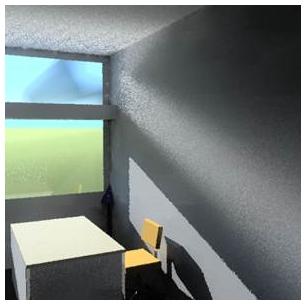Harnessing natural light, indoors

© 2012 Photos.com
Using the most recent generation windows, architects and lighting designers can to control daylight, directing it where they want within a room. An EPFL laboratory has developed a simulation tool to make access to this technology more widely available.
How can the diffusion of natural light be sent into the farthest corners of a room – optimized, among other things, to save energy? It’s an architectural conundrum. The light source should be neither blinding nor too low, in summer and winter alike. To achieve this tour de force, without using skylights or mirrors, new kinds of increasingly complex glass are being developed, but they have not caught on, due to their high cost and difficulty of implementation. Architects are not trained specifically in these technologies. But Geronimo, a simple visual simulation software developed at EPFL, should make their task easier.
To venture into today’s simulation software, you need to be a lighting specialist. The programs are complicated, and the graphics they generate are difficult to interpret. In addition, it is a laborious process to accurately visualize the look and effectiveness of the glass that you want to install.
Sunlight doesn’t enter a room casually any more
 The role of complex windows is to direct sunlight where it is most beneficial and least irritating. They also maximize light use in cloudy conditions while at the same time preventing overheating and glare in a blazing sun. These latest-generation windows are often designed for channeling the light in two directions, towards the ceiling and towards the interior of the room. For example, some windows contain curved strips that capture and redirect the light. The performance of these special windows is tested in enormous machines called goniphotometers. EPFL’s machine is three meters in diameter – not very practical when you want to build an architectural project.
The role of complex windows is to direct sunlight where it is most beneficial and least irritating. They also maximize light use in cloudy conditions while at the same time preventing overheating and glare in a blazing sun. These latest-generation windows are often designed for channeling the light in two directions, towards the ceiling and towards the interior of the room. For example, some windows contain curved strips that capture and redirect the light. The performance of these special windows is tested in enormous machines called goniphotometers. EPFL’s machine is three meters in diameter – not very practical when you want to build an architectural project.
EPFL’s Laboratory of Solar Energy and Building Physics (LESO) decided to create a giant database using the data from all these window tests. They implemented the database into their software, which the lab is making open source, freely available to architects and lighting designers. To use the software, they just need to enter the kind of glass, click on geographical coordinates, the time of day and periods of the year, and Geronimo gathers the information and transforms it into images. They can see in a single glance the impact that various different complex windows will have in their virtual mockups. “There’s the human view of the location, but also a statistical analysis,” explains Geronimo’s developer, Jérôme Kämpf. “Geronimo gives luminosity values at various points, and the potential to improve it with the selected glass.”
Developed from a thesis
To develop the software, the scientist drew upon the results of a PhD thesis that had been done several years earlier by Maryline Andersen, who is currently a professor at EPFL. Her work focused on the performance of the then brand-new complex glass, and the thesis gave manufacturers critical information about bidirectional transmission of light. The values characterized at the time by Andersen have since become reference values for describing products.
Today LESO is taking another step forward with Geronimo, by providing a simple, easy-to-use tool to architects who want to “harness the light.”
Downloadable software: http://leso.epfl.ch/geronimo
